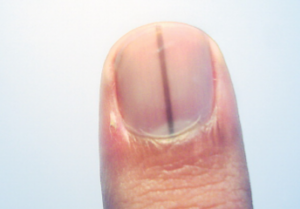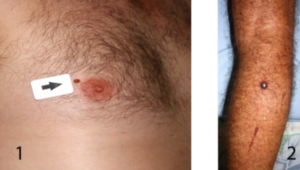If your young child barely looks at your face while you’re playing together, just how indicative is this of autism spectrum disorder?
Poor eye contact has been strongly associated with ASD for about 80 years.
This distinct metric all began in 1943 when Leo Kanner first described autistic kids as “never looking at any person’s face.”
In fact, ask most people to name a sign of autism, and many will mention avoiding eye contact or hardly giving it.
This has been so closely associated with autism that it’s one of the first things that parents and pediatricians look for when concerned a young child might be autistic.
There’s new research that challenges this idea that lack of eye contact or “ignoring faces” probably means autism.
Scientists at the Shanghai Institute of Artificial Intelligence for Education at East China Normal University published their findings in the ECNU Review of Education.
The researchers wondered whether gaze aversion or avoiding “face contact” is truly a defining characteristic of autism.
The study showed that during play, autistic kids looked at toys and adults’ faces in nearly identical ways as did neurotypical children.
Both groups spent most of their time (60-80%) focusing on their toys, while they briefly glanced at the adults’ faces only about 6-14% of the time.
So the logical deductive question becomes: “What if avoiding eye contact isn’t specific to autism after all?”
The researchers made their discovery by observing young kids in a setting more natural than the typical clinical environments used for autism assessments.
Traditional evaluations often take place in controlled spaces where kids are prompted by researchers or even possibly parents to interact with an evaluator.
This control can interfere with what could be the natural flow of outcomes in a more natural play environment.
In contrast, the Shanghai team set up a specialized atmosphere designed to feel comfortable to the kids.
At the same time, the team was able to make precise measurements of their behavior.
This more casual and natural environment helped reveal unexpected patterns.
The Study Findings: Eye Contact in Autistic vs. NT Children During Play
Whether a child was autistic, neurotypical or had other developmental deficits, their visual attention patterns were actually statistically similar.
All the kids spent most of their time looking at their toys, occasionally glancing up at the adult’s face.
This indicates that limited eye contact during play may be a normal behavior for all kids rather than a trait that specifically means ASD.
If limited eye contact during play is typical for all children, then perhaps it’s not accurate to use this behavior as a primary diagnostic indicator for being on the spectrum.
And you also have to ask yourself why a child, who’s excited about playing with a particular toy, would want to spend a lot of time holding eye contact with a nearby adult.
Similarly, if an NT adult is absorbed in a hobby, why would they want to keep meeting the eyes of another adult in the room?
In fact, neurotypical adults whose eyes and hands are busy with a hobby will only occasionally glance up at the face of the nearby person they’re having a conversation with.
Another Study on Eye Contact in Autistic vs. NT Kids
A recent study by Yurkovic-Harding, et al was published in Current Biology involving eye trackers that were mounted on the heads of kids.
Using head-mounted eye trackers to record children’s gaze patterns, they found that both autistic and NT children looked at their parents’ faces only about 1% of the time.
However, both groups of kids focused on their parents’ hands much more often.
This suggests that kids may track hand movements to establish “joint attention” during play – and this is considered an important part in early childhood development.
While adults may rely more on eye contact to signal and maintain connection (especially since they may think that minimal eye contact is rude), kids might use hands or other gestures to make social connections.
Researchers observed that autistic kids might focus on an adult’s hands rather than their face to establish joint attention, more so than an NT child might, but NT children will still do this.
In other words, minimal eye contact in kids, including autistic, shouldn’t be taken to mean lack of interest in the adult.
Other Elements of ASD that May Need to Be Revisited
Could other behaviors, previously thought to be strongly characteristic of autism, be misunderstood due to lab-controlled or incomplete observations?
While autism remains a distinct neurodevelopmental condition with differences in social communication when compared to non-autistics, the way those variations manifest in everyday life might be more different than previously believed.
For example, kids on the spectrum might not always deliberately avoid eye contact — they might just be engaging with the world around them in other ways, such as tracking hand movements or focusing on objects instead of faces.
I have a clinical diagnosis of autism. And I must admit, when I’m telling a story to someone, I’d much rather be looking away from their faces.
Why? Because holding eye contact or even face contact would be quite distracting. It would feel forced, not natural.
It feels way more natural to let my gaze freely drift to the side, sometimes a little upward, while explaining things.
Why would I need to look at someone for the majority of my talking? Because it’s a social norm?
I’m not going to do that anymore unless I’m speaking to a retail manager about a major refund or some other substantial business goal, and even then, I often catch my eyes drifting.
I do hold eye contact when I’m listening, though it often feels unnatural.
Study Limitations
While the Shanghai research doesn’t provide all the answers, it suggests that we may be misunderstanding a core behavior associated with autism.
The study:
- Didn’t include demographic information.
- Didn’t cover how eye contact patterns might change with age or across the autism spectrum.
- Didn’t explore the wider range of factors that influence how autistic children engage with the world.
- Didn’t study eye contact in the context of the absence of toys, e.g., direct interaction between parent (or other adult) and the kids.
The Shanghai and Yurkovic-Harding studies have opened doors that will help increase the understanding of the more subtle ways that autistic kids communicate differently than do NT kids.
 Lorra Garrick is a former personal trainer certified by the American Council on Exercise. At Bally Total Fitness, where she was also a group fitness instructor, she trained clients of all ages for fat loss and maintaining it, muscle and strength building, fitness, and improved cardiovascular and overall health. She has a clinical diagnosis of ASD.
Lorra Garrick is a former personal trainer certified by the American Council on Exercise. At Bally Total Fitness, where she was also a group fitness instructor, she trained clients of all ages for fat loss and maintaining it, muscle and strength building, fitness, and improved cardiovascular and overall health. She has a clinical diagnosis of ASD.
.



























